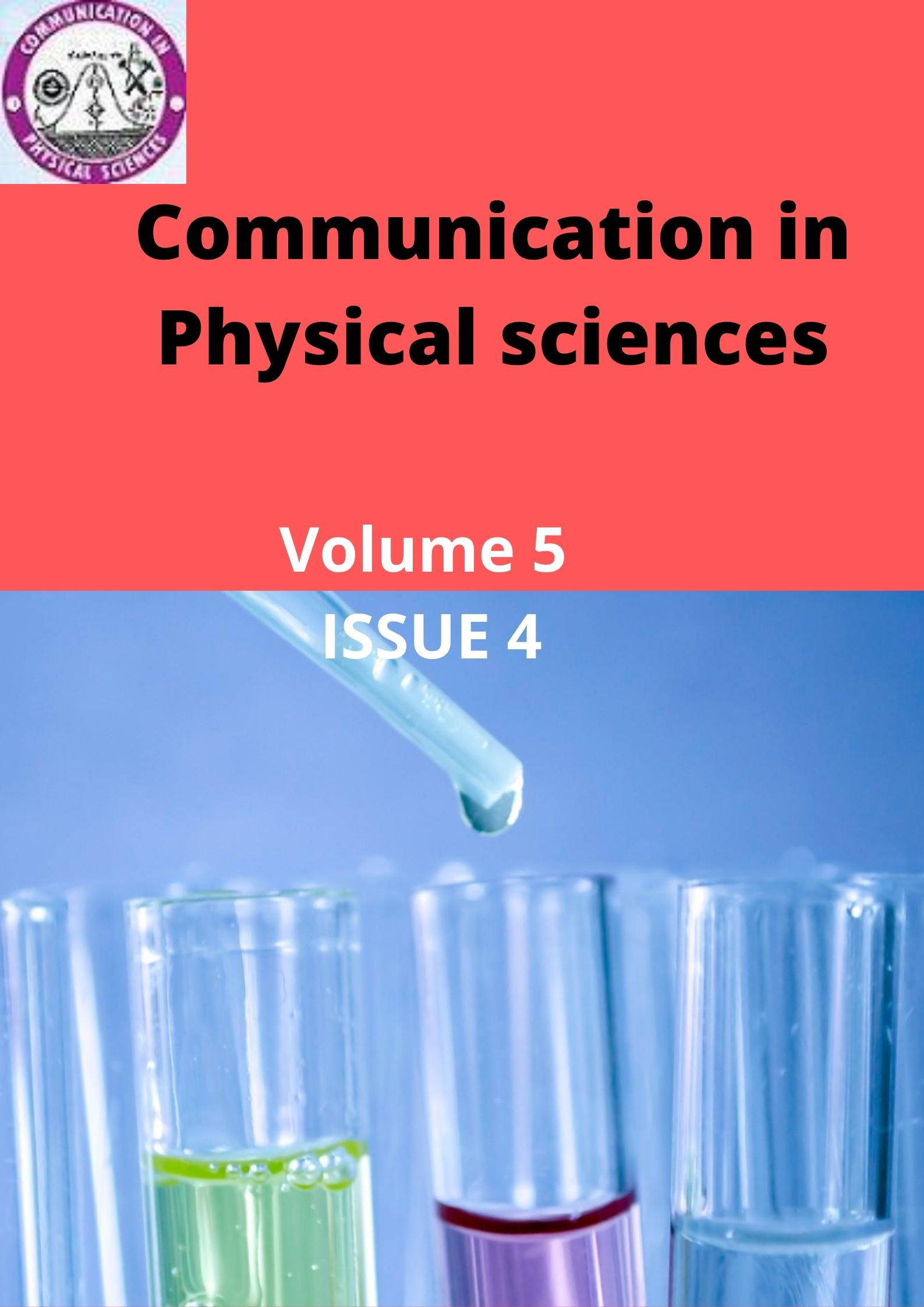Chemical synthesis and characterization of zinc, iron and carbon-based nanoparticles and their nanocomposites
Keywords:
Nanoparticles, nanocomposites, grapheme oxide, zinc oxide, magnetite, chitosanAbstract
The wet chemical approach (an aspect of the bottom-up method) was used to synthesize zinc oxide, magnetite and graphene oxide, graphene oxide/magnetite and chitosan/magnetite nanoparticles and their nanocomposites. The synthesized particles were characterized by FESEM/EDX, FT-IR and XRD techniques. Zinc oxide was obtained with a crystallite size of 9.0 nm. The synthesized magnetite particles had a crystallite particle size of 6.4 nm. Crystallite sizes obtained for GO, GO-magnetite and chitosan-magnetite were 7.9, 7.1 and 11.2 nm, respectively. The synthesized composite did not display any phase change in the magnetite
Downloads
Published
Issue
Section
Most read articles by the same author(s)
- Chisom Friday, Okenwa U. Igwe, Jude C. Nnaji, Nanoremediation Research in Nigeria: A Review , Communication In Physical Sciences: Vol. 9 No. 1 (2023): VOLUME 9 ISSUE 1
- Comfort M. Ngwu, Adeniji Moshood Oluwaseyi , Chioma Ikechi Harbour , The Effects of Microplastics and its Additives in Aquatic Ecosystem - A Review , Communication In Physical Sciences: Vol. 10 No. 2 (2023): VOLUME 10 ISSUE 2
- Comfort M. Ngwu, Okoche K. Amadi, Augustine C. Egwu, Sorption Studies on the Removal of Industrial Dye Aniline Yellow From Aqueous Solution Using Surfactant Modified Iron Filings , Communication In Physical Sciences: Vol. 6 No. 1 (2020): VOLUME 6 ISSUE 1
Similar Articles
- Elisha Karu, Buhari Magaji, Zaccheus Shehu, Hadiza Abdulsalam, Biosynthesis of Zinc Oxide Nanoparticles Using Solenostemon Monostachyus Leaf Extract and its Antimicrobial Activity , Communication In Physical Sciences: Vol. 6 No. 1 (2020): VOLUME 6 ISSUE 1
- Femi Emmanuel Awe, Muhammad Dahiru Faruruwa, Hadiza Abba, Green Synthesis, Characterization and Antibacterial Activity of Zinc Oxide and Titanium Dioxide Nanoparticles Using Terminalia Catappa and Cymbopogon Citratus Leaf Extract , Communication In Physical Sciences: Vol. 7 No. 4 (2021): VOLUME 7 ISSUE 4
- Felicia Uchechukwu Okwunodulu, Stella Mbanyeaku Ufearoh, Amaku James Friday, Angela Nwamaka Anim, Colorimetric detection of Hg(II) ions present in industrial wastewater using zinc nanoparticle synthesized biologically with Rauwolfia vomitoria leaf extract , Communication In Physical Sciences: Vol. 5 No. 4 (2020): VOLUME 5 ISSUE 4
- Patricia Adamma Ekwumemgbo, Gideon Adamu Shallangwa, Idongesit Edem Okon, Ibe Awodi, Green Synthesis and Characterization of Iron Oxide Nanoparticles using Prosopis Africana Leaf Extract , Communication In Physical Sciences: Vol. 9 No. 2 (2023): VOLUME 9 ISSUE 2
- Yunusa Habibat, Omoniyi K. Isreal, Stephen Abechi, Aroh A. Oyibo, Owolabi A. Awwal, Imam Naziru, Green Synthesis of Titanium Oxide (TiO2) Nanoparticles Using Phyllanthus Niruri and Assessment of Its Antibacterial Activity in Wastewater Treatment , Communication In Physical Sciences: Vol. 10 No. 1 (2023): VOLUME 10 ISSUE 1
- Thomas Ndidi Asiwe, Idongesit Bassey Anweting, Atim Sunday Johnson, Nzikahyel Simon, Solomon Enejo Shaibu, Eco-Friendly Synthesis and Characterization of Silver and Zinc Nanoparticles Using Aqueous Extract from the Bark of Antiaris toxicaria , Communication In Physical Sciences: Vol. 12 No. 1 (2024): VOLUME 12 ISSUE 1
- Nsikak Bassey Essien, Chukwu Obaji Daniel, Raphael Mmenyene Paul, Synthesis and characterization of Silicon Oxide Nanoparticles using Plantain Peel as a Precursor , Communication In Physical Sciences: Vol. 11 No. 1 (2024): VOLUME 11 ISSUE 1
- Fabian James Umoren, Mfon Clement Utin, Resource Recovery from Maize Wastes; Synthesis and Characterization of Silicon Oxide Nanoparticles , Communication In Physical Sciences: Vol. 11 No. 3 (2024): VOLUME 11 ISSUE 3
- Attah Chuks Emmanuel, Removal of Cadmium Ion from Aqueous Solution by oyster-based Based Calcium Oxide Nanoparticles , Communication In Physical Sciences: Vol. 10 No. 3 (2023): VOLUME 10 ISSUE 3 (2023-2024)
- Aniekan Udongwo, Oluwafisayomi Folorunso, Resource Recovery from Maize Biomass for the Synthesis of SiO2 Nanoparticles and Crystallographic Analysis for Possible Applications , Communication In Physical Sciences: Vol. 12 No. 2 (2025): VOLUME 12 ISSUE 2
You may also start an advanced similarity search for this article.




